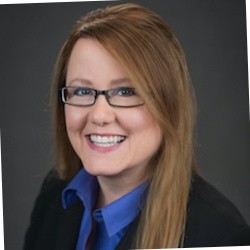Remote patient-monitoring technology still faces reimbursement roadblock
Reimbursement remains an obstacle to widespread adoption of remote patient-monitoring technology in long-term care, but changes in government incentives, nursing staffing levels and the size of the senior population ultimately will result in greater use, according to Bruce Carlson, publisher at Kalorama Information. The company publishes several reports related to technology trends in healthcare, including in the long-term care (LTC) sector.
Hospitals and clinics still account for most of the $10.6 billion market for remote patient-monitoring devices in the United States, Carlson said. Home-based remote monitoring and telemedicine, which relate to long-term care, total $4.1 billion of this amount, he added.
“Nursing homes do tend to be slower to adopt technologies due to cost concerns and decreasing reimbursement rates, payment rates and the reliance on patient assets or long-term insurance to match what Medicaid does not pay,” Carlson told Long-Term Living. “It makes capital investment difficult.” Hospitals have their own struggles with technology adoption, he added, but generally have better “foundation assets and income streams.”
Currently, some skilled nursing and assisted living communities may be using remote patient-monitoring technology to measure blood pressure, weight and other vital signs, Carlson said. Further adoption may occur with increased electronic health record (EHR) system purchases spurred by government incentives as well as nursing shortages that cause facilities to look for ways to increase efficiencies with limited staffing, he predicted. Changes to the technology itself, including more wireless and handheld options, may attract additional interest.
“Remote patient monitoring is, overall, a fast-growing market,” Carlson added. The telemedicine patient-monitoring market grew from $4.2 billion in 2007 to more than $10 billion in 2012, according to Kalorama’s Advanced Patient Monitoring Systems report, released earlier this year. “It’s definitely the future, but there are challenges, and reimbursement policy needs to be clear for the technologies to spread widely.”
Kalorama Information defines telemedicine as patient monitors that are used outside of acute healthcare settings and can transmit vital signs or other information to healthcare professionals for interpretation or action. Some devices offer two-way communication in audio or video, EHR data transfer and advanced diagnostic capabilities.
Technology vendors, especially the smaller ones, studied by Kalorama have reported customer difficulties in obtaining reimbursement for telemedicine technology, Carlson said. “Yet each year, as [return-on-investment] examples are made available, we think this will get better,” he added. Additional concerns for long-term care and others include compatibility between devices and applications, privacy and security.
The aging population of the United States is expected to lead to wider technology adoption in senior living, too, Carlson said, as LTC communities look for efficiencies in serving increasing numbers of residents. “In 2010, there were 15,690 nursing homes registered in the United States, housing more than 1.7 million residents,” he said. “Overall, the country operates at a near 82 percent occupancy rate, with some states operating at a rate of nearly 100 percent. New York is now the largest state for residents, with a climbing figure of nearly 110,000 residents. California follows with its steady 100,000 residents.”

Lois A. Bowers was senior editor of I Advance Senior Care / Long-Term Living from 2013-2015.
Related Articles
Topics: Articles , Clinical , Technology & IT











